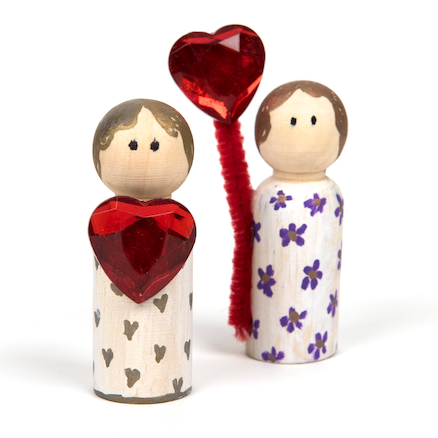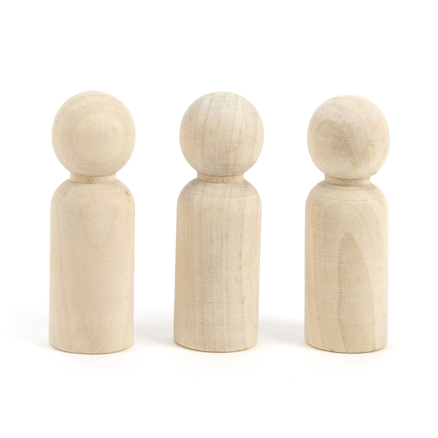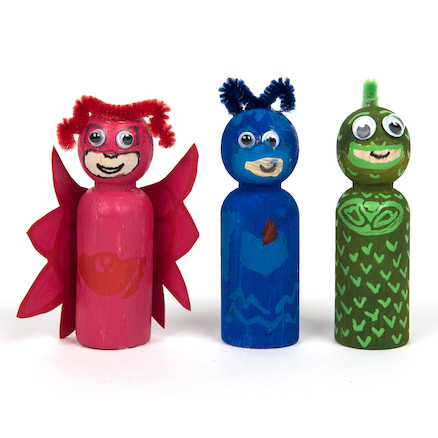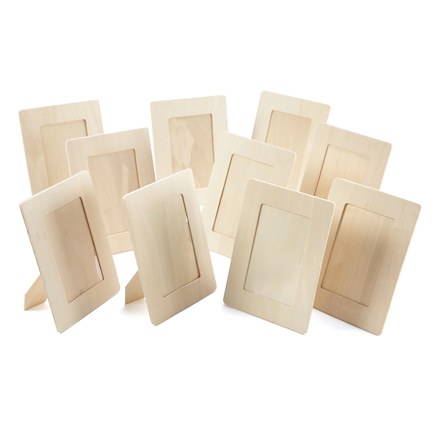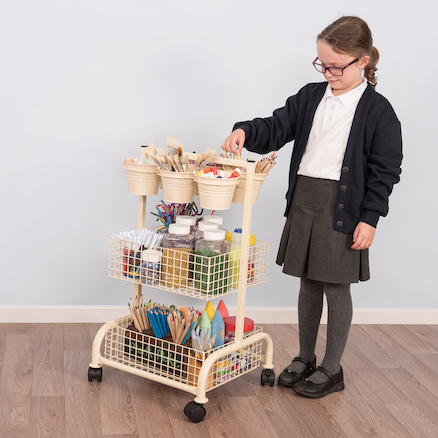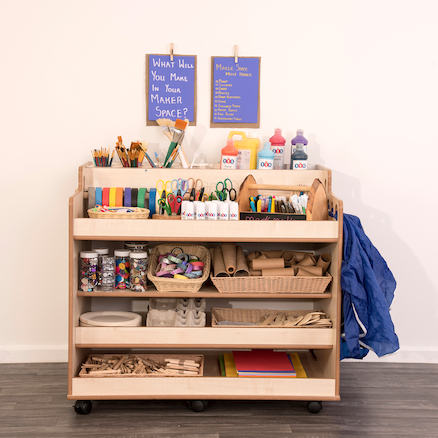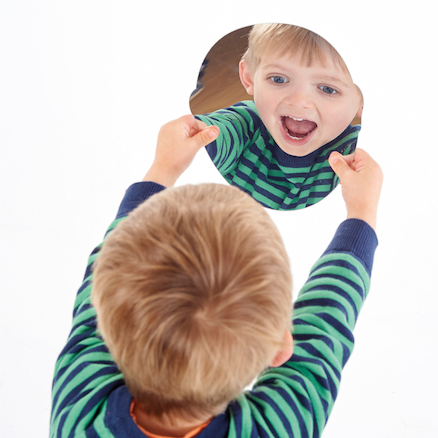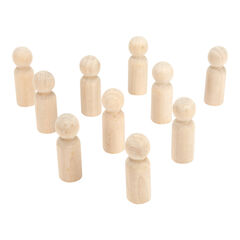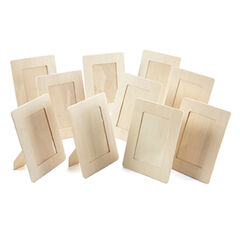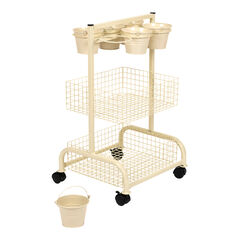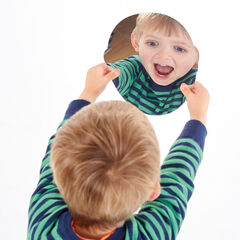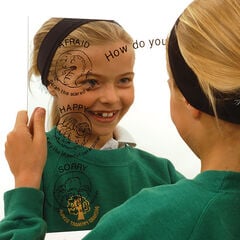This blog is part of a 6-part series. To find where you left off head on over to our wellbeing blog page.
Children who need the most love often express it in the most unloving of ways.
Russel Barkley
The most important and valuable resource when it comes to getting to know your pupils is you. Building a genuine, positive relationship is something that can only be done with trust and time. Our children need adults that are consistent, dependable and real. They need to feel that you genuinely like them, root for them and value them being a part of your class.
No one can wave a magic wand and allow you to instantly know all your unique children, but it is something that to be able to have a truly mentally healthy classroom should be prioritised and invested in from day one. Children learn from people they like, if you take time to get to know them, they will 9 times out of 10 like you, and then be in a better place to learn anyway!
All behaviour is communication
Any type of behaviour we see in the classroom is a form of communication. As you develop a relationship with the children in your class, you will begin to identify triggers and detect what it is that is causing a child’s behaviour. Of course, there will be children that it is difficult to build a relationship with, that display incredibly challenging behaviours and can make it challenging for our own mental health. However, these children are most likely the children that need to access a mentally healthy classroom more than any other. These are the children that if we purely focus on the behaviour, we are missing the bigger picture, we are missing what they are trying to communicate and that we are not meeting their needs effectively.
Remember you can give children tonnes of love and support and positive engagement, for them to throw it back and this is simply because they are not used to it and don’t know how to deal with it. In creating a mentally healthy classroom we can begin to really get to know the child and make small steps of progress to move forward.
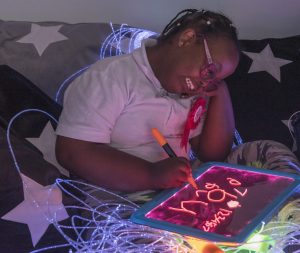
Strategy 1 – Holding In Mind
One of my favourite strategies for getting to know the children is ‘holding them in mind’. You will know those children that need to feel seen, that need boosts to their self-esteem, that need to know you genuinely care. Again, being genuine is key here because remember what I said about children being able to sense when we are not being genuine. With this strategy you point out things that have happened, or you saw etc that reminded you of them. For example “I went to home bargains at the weekend with my little boy and we saw the spiderman toys, it made me think of you because I know how much you love them!” or “I saw a Labrador on my walk last night, don’t you have a Labrador? It made me think of you.” A simple sentence but it really helps build that relationship and get to know the child. You are inviting them to talk more and also letting them know that you genuinely take an interest in them.
Strategy 2 – Listen
Finding time in the busy day to day life of a school can be challenging but finding time to always listen to your pupils should be paramount. Just think, if that child has plucked up the courage to tell you something and you dismiss it because you don’t have time, it could prevent that child from trying again. The relationship you could have developed may have been blocked. This ties in with safeguarding, but from the point of creating a mentally healthy classroom always make sure your children know you will listen to them. If it’s not an appropriate time then discuss with them when you can listen and chat, or refer them to someone who can listen right now.
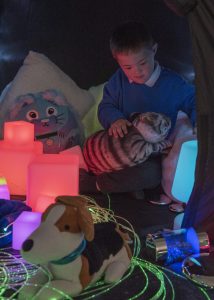
Strategy 3 – Unconditional Positive Regard
Carl Rogers talks about ‘unconditional positive regard’. This is essentially accepting, valuing and treating a pupil positively regardless of their behaviour. For this, getting to know the individual child and building that relationship is really important. When holding children in unconditional positive regard, we are communicating to the pupil that they are worthy and capable even if the pupil doesn’t feel or act that way.
Strategy 4 – I see you, I notice you, I hear you
Another great strategy I like to use is simply – ‘I see you, I notice you, I hear you.’ Make a point of noticing the small, insignificant things and casually commenting on it to the child. “Wow I love your hair today!” “I can see you’re getting so much writing down on paper!” “Your brain is working so hard I can hear it tick!” Some children may benefit from you actually checking in with them too, so they feel connected to you and know they can depend on you. Be ‘dependably boring’. Children don’t need all singing, all dancing (although this is great some of the time of course!) what they need is consistency, continuity, and to know that they can depend on you. You become their safety net.
Ideas for resources that can help
Wooden People Set
I love this wooden people set as a great activity to do with your children which can then double up as a resource to use in your mentally healthy classroom. There are different ways you could use these dependent upon if you do them whole class or as part of a small group intervention and I’ll share a few ideas below:
- Each child can paint their own wooden person to represent themselves. This would create an opportunity to discuss and talk about themselves, why it’s good to be them, their qualities and strengths and weaknesses. Once every child in the class has made one, they could then be used as a signal for children to let the teacher know when they need help, or aren’t feeling quite right (mentally or physically). Children could pop their little person on their desk so the teacher knows to check in with that child.
- The wooden people could also be used in a play based therapy session or small world set up for the children to role play situations with their class mates. This could be really revealing in terms of getting to know each child and being able to listen in on the language and conversations they use in their small world. As the teacher, it could open up discussions you’re unaware of. In a 1:1 or small group play therapy session, the wooden people could be used for the child to represent themselves or their world.
- Instead of getting the children to paint them to represent themselves they could paint them to represent different emotions. These could then be used through circle times or as a warning signal where a child can pick up the emotion they’re feeling if they want to communicate in a non-verbal way. As the children have created these themselves, they will have more ownership, understanding and engagement with them. It will be personally meaningful and you could do work around the emotions and what each emotion feels like for each individual person.
TTS Emotion Stones
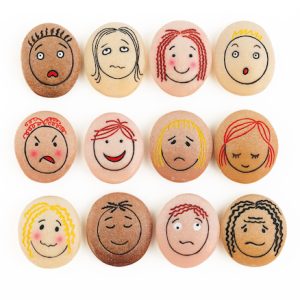
The TTS emotion stones can be used in a similar way to the wooden people and are especially great to use during a circle time. The smooth texture also offers some sensory feedback and many children will find it helps them to regulate when talking to others by holding something in their hand.
Make your own photo frames
Decorating your own craft frames is also a great way to get to know your class. They can decorate the frame to portray their interests, likes and dislikes etc then choose a picture of something that is special to them to go inside. This doesn’t have to be a photo of them, but these could be put on display and used as a prompt or talking point. The frames could then be used to display their best piece of work – again celebrating and boosting children’s self-esteem throughout the year.
One resource and yet it can be used over and over!
Creative Station
Have a variety of colouring pencils, paint sticks, post it notes, dry whiteboards, pens and other mark making materials available at an accessible station where children can independently access these. This allows them to be able to freely express things they want to in the moment – perhaps through a drawing, a scribble or even writing a message. You could have a postbox where they can pop these in if they want them to be seen by an adult. I would also have available some visual cue cards of emotions and basic needs, and some talking tins where they can record a note to you.
Mirrors
Plastic mirrors can be really great in helping children to visualise and understand what emotions look like in a multi-sensory way. We can talk about feeling happy and sad – but do they know what they look like when they are feeling this way? Do they ever look in a mirror and tell themselves something they like about themselves? Do we ever give children time to reflect, to pause, to celebrate being them.
Hand a mirror out to every child in your class and encourage them to look in the mirror, to talk about how it makes them feel and to celebrate what is unique about themselves. Spend time pulling funny faces, making each other laugh, and creating emotions by doing an angry face in the mirror etc.
And finally …
Allowing children varying ways to express themselves and help you get to know them is key. Not all children will respond to being sat down and asked a question in front of their peers, we need to provide ways to communicate that are accessible for all. The child who feels too anxious to ask for the toilet may happily go and pick up the toilet cue card and pass it to you. The child who doesn’t have the vocabulary to express that they are feeling disappointed might draw you a picture of a sad face, or the child who is incredibly angry might scrunch up some paper and scribble all over it. All of these are forms of communication and we are enabling the children to help us get to know them better by providing resources for them to communicate with.
Connection is key and by getting to know the child, you will be developing that bond and true connection.
Jump to Part 3.
With many thanks to Ruth Lue-Quee for writing this article for us.
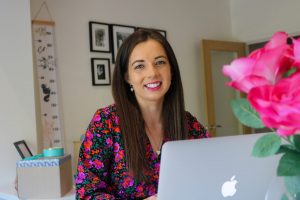
Ruth is the founder of My Mummy Teacher, an educational brand that whole-heartedly believes in the power of play. My Mummy Teacher empowers parents and professionals to help their children learn through play, through their best-selling Learning Through Play Cards and a range of additional products and services, that are uniquely adaptable for a wide range of abilities. Ruth is a highly qualified, former Deputy Headteacher of a primary school and has also worked in many aspects of Special Educational Needs including mainstream and additional resourced provision settings. She has considerable experience as a Senior Leader and is passionate about teaching, learning and inclusion within KS1 and EYFS. As well as running My Mummy Teacher, she proudly works in partnership with Cadmus Inclusive as an Inclusion Consultant and regularly writes as an expert for businesses, companies and in the press on Educational and Parenting matters.


